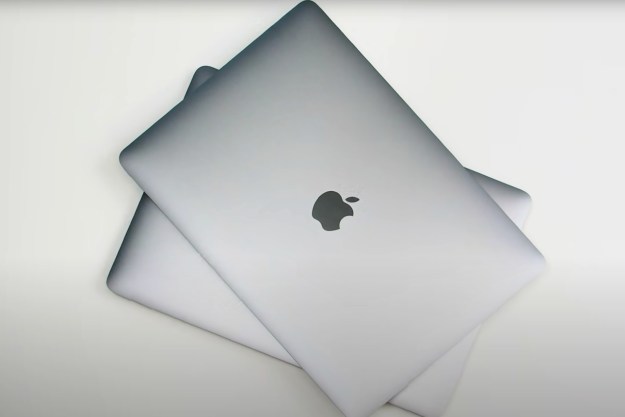Two of the most popular laptops of 2020 are the Dell XPS 13 and Apple’s MacBook Air. Both have been updated with new features and designs, and you may be wondering which is the better option. I spent weeks with both devices, trading off the two laptops as my daily driver. Here’s everything you need to know about how these two laptops stack up against each other.
Want a good deal on an XPS 13 or MacBook Air right now? Here are the best Dell XPS 13 deals and the best MacBook deals available now.
The Dell XPS 13 is the better buy

The XPS 13 and MacBook Air are both premium
But let’s get one thing out of the way right off the bat. Baseline price. Both companies have $999 starting models, but Dell has a performance advantage. Its newest base configuration has an 11th-generation Core i3 processor with 8GB of RAM and 256GB of storage. The MacBook Air offers a 10th-generation Core i3 chip with 8GB of
While the baseline MacBook Air has the older CPU, it has a higher-resolution screen than the XPS 13. At 2,560 x 1,600, it has a sharper pixel density than what you get in other 13-inch

The XPS 13 has much more room to grow with more expensive configurations. The XPS 13 offers upgraded versions with 32GB of
Ultimately, when you max out both devices, the cost is only $100 more with the XPS 13. It’s worth the extra for the faster memory, newer processor, and higher resolution.
The Dell XPS 13 is the faster laptop

When you look at the prices where these two
While it’s true that the XPS screen isn’t as pixel-dense, the performance takes a huge leap. The XPS 13 is the most powerful 13-inch laptop I’ve ever tested. It offers raw strength that most
Apple originally touted its latest Core i5 MacBook Air as twice as powerful as previous models. But don’t be fooled — it’s a less powerful processor. With only nine watts of power draw, it can’t keep up with the 15-watt Core i5 chips used in other XPS 13 configurations. A lower thermal profile means tighter restrictions on heat, and therefore, performance.
Will you notice the difference? Yes, though it depends on the workload. If your daily routine consists of Chrome, Spotify, Netflix, Slack, and YouTube, you likely won’t feel the disparity in processing power. Even with dozens of tabs and many applications open, the Core i3 MacBook Air will be unfazed. As I noted in the review, you can even pull up GarageBand or iMovie to do some light content creation.

But if you’re a photographer working with high-resolution photos in Lightroom or an extreme multitasker looking to power multiple
It’s also the go-to choice for a laptop to travel with. The XPS 13 is both thinner and lighter than the MacBook Air, and thanks to thin bezels, it has a significantly smaller footprint.
It will also last a few hours longer than the MacBook Air on a single charge to let you squeeze in some extra work on that long work trip.
There’s a caveat there, though. The MacBook Air will maintain similar battery life no matter what configuration you use. The XPS 13 will dip by a couple of hours once you equip it with the optional
Windows, Mac, and Apple
The ecosystem is something to consider. There’s no question that iPhones, Apple Watches, AirPods, and MacBooks pair really well together. Having iMessage, iCloud, and AirDrop across all platforms is undeniably convenient. It’s what Apple has always done so well, and while you might hack together a similar solution with Windows apps — Dell’s Mobile Connect and Microsoft’s Your Phone Companion for Android) — it’s just not the same.

When you purchase Apple’s MacBook Air, Apple’s suite of applications also comes free. Microsoft’s Office suite is preferred by most, but you’ll need to pay extra to bundle that in with the Dell XPS 13. While neither the Mac App Store nor Microsoft Store will knock your socks off, Apple’s Mac Catalyst program means more iPad apps ported over to the Mac. That could have some serious potential for the future of the Mac app ecosystem.
Most people strongly prefer MacOS or Windows. But today, there’s far less difference than there used to be. MacOS offers better trackpad gestures, while Windows has full touchscreen support. Windows has facial authentication for quickly unlocking the device, while Touch ID on MacOS can be used for things like payment and user profile authentication.
Any devices working with Windows 10 or MacOS software will benefit from the annual performance and security updates that accompany both operating systems. Updates for these operating systems aren’t pushed out as often as the developers upgrade mobile devices, but the updates that are released shouldn’t be overlooked.
Apple MacBook Air vs. Dell XPS 13: Which should you buy?
In its most recent upgrade, the MacBook Air features a solid keyboard (thank goodness) and a fitting price. Both the MacBook Air and the Dell XPS 13 are priced at $999, but the XPS stands high above the Air, even though the graphics aren’t as good as we’d prefer.
The Dell XPS 13 has consistently reigned supreme over the MacBook Air when you reach the top level of efficient operating systems. This product provides killer performance, a highly-appealing design, and an exceptional
Editors' Recommendations
- Best MacBook deals: Get an Air for $605 and save on M3 MacBook Pro
- Best Dell XPS deals: Save on Dell XPS 13, Dell XPS 15 and Dell XPS 17
- Best Apple deals: Save on AirPods, Apple Watch, iPad, MacBook
- The 5 best MacBooks for video editing in 2024
- MacBook Pro 16 vs. MacBook Pro 14: The important differences


